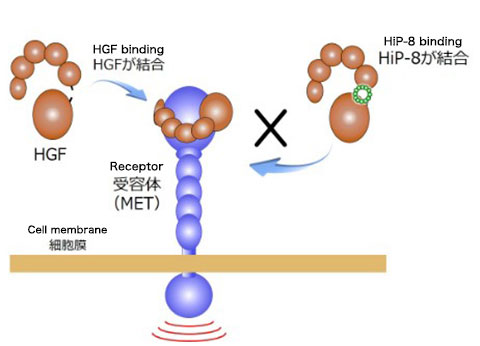News
Research Team Finds a Peptide which can Help Diagnosis and Treatment of Tricky Cancers Updated in July 2019
Research group consisting of Kanazawa University and others said they found a peptide that could lead to improved diagnosis and treatment of troublesome cancers that are easy to metastasize and are difficult to respond to chemotherapy. A peptide is made up of small numbers of amino acids that are bound together. By using this peptide as a marker, it can help improve the outcome of cancer treatment. Research results were published in the May 17, 2019 issue of Nature Chemical Biology.
Asst. Prof. Katsuya Sakai, Assoc. Prof. Mikihiro Shibata and Prof. Kunio Matsumoto of Kanazawa University (Cancer Research Institute; WPI-Nano Life Science Institute; Institute for Frontier Science Initiative), Prof. Hiroaki Suga from University of Tokyo Graduate School of Science, Unit Leader Hidefumi Mukai and Team Leader Yasuyoshi Watanabe from RIKEN Center for Biosystems Dynamics and Research participated in the group.
Previous studies have found that a protein called “Hepatocyte Growth Factor (HGF)” promotes the growth of normal cells, as well as metastases of cancer cells. HGF is secreted outside the cell. By binding together with a receptor protein (MET), it can promote tissue growth and regeneration. However, when HGF acts on cancer cells, it can trigger metastases and can make anticancer drugs ineffective. Asst. Prof. Sakai’s team had used the RaPID (Random nonstandard Peptide Integrated Discovery) method developed by Prof. Suga and found a round peptide (HiP-8) that only binds with HGF. When HiP-8, a cyclic peptide stuck together with HGF, it inhibited actions of HGF.
The group administered HiP-8 to a specifically marked mouse, transplanted with human cancer cell. By observing the mouse with a device that can capture this marking, they confirmed that HiP-8 gathered closer towards cancer cells with more HGF. From these results, Asst. Prof. Sakai’s team expressed high hopes on how they will be able to utilize the cyclic peptide HiP-8 to spot cancer cells that can metastasize, to treat cancers that do not respond well to anti-cancer drugs or to optimize image-diagnosis.








